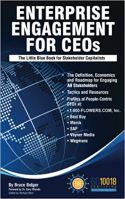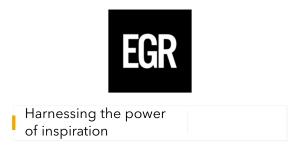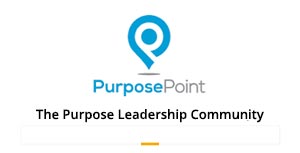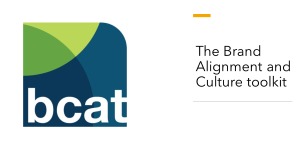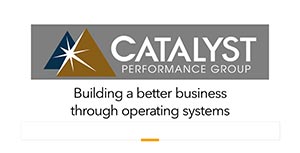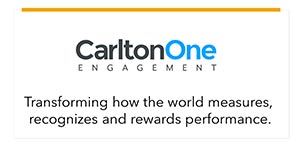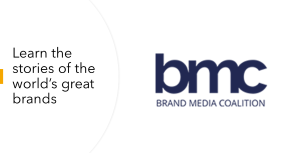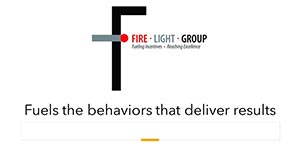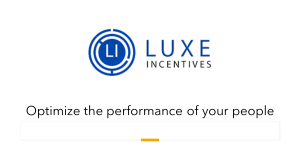‘Hey! There’s a Person in There!’
To survive and prosper in tumultuous economic times, a firm’s most important operating asset is a resilient, innovative corporate culture – and the engaged employees who promote it from within.
“Nothing sharpens the mind like an imminent hanging. One’s own even more so than another’s.” - Samuel Johnson
| An Elusive Concept | Spanning Organizational Boundaries |
| The Mechanical Turk | There’s No Mystery |
By Don Peppers and Martha Rogers, Ph.D.
In the midst of the biggest economic downturn in several decades, the hangings have already begun. There is outrage in the air – anger at the greed, selfishness and ruinous short-term thinking of those we think got us into this mess (if only we knew for sure!). Across Europe and the U.S., ordinary citizens’ resentment is whipping up a lynch-mob mentality. Some of the hangings are greeted with cheers from the crowd.
“Resilience” is a word we’re hearing much more frequently now, as business executives sharpen their thinking in this crisis. Used to be we would only encounter words like “resilience,” “agility” and “innovation” when they were mentioned as the objectives on the far horizons of strategic plans outlined during occasional off-site meetings. The red meat for most business executives was still found in producing reliable, predictable quarterly results. This quarter.
But now executives everywhere are realizing that short-term financial success, no matter how reliable or even spectacular it is, doesn’t protect any business from the gallows. So, more purposefully than before, their minds are turning to the issue of what it takes for a company to be able to respond flexibly and nimbly to the unpredictable cycles of the global economy. The question keeping execs awake at night? Assuming our business can survive this current economic storm, how can we prepare better for the next one?
An Elusive Concept
Study after study has shown that the single most important factor in ensuring a company’s prosperity over the long term is “culture.” An elusive concept to pin down exactly, culture consists of the mostly unwritten rules and values that define “how things are done around here.” Culture is, simply, what our employees do when no one is looking. The culture at a firm is far more important than all the process maps, written plans and organizational charts that define the company’s formal structure and its announced policies. Leadership does contribute to culture, and so do compensation plans and HR policies. But culture is still much more than the sum of its executive-driven parts.
In a classic study of persistently successful firms, documented in their book Built to Last, James Collins and Jerry Porras found that resilient companies – companies that seemed to be “built to last” – were able to hold on to a core set of values while simultaneously tinkering, exploring and experimenting with new ideas. At nearly all of the durably successful companies they identified, including HP, Wal-Mart, Nordstrom, GE, Walt Disney, Johnson & Johnson, 3M and Marriott, among others, the corporate culture is something almost tangible. It’s a quality that engages the employees at these companies with a sense of purpose, infusing them with a mission that goes well beyond simply making a profit or building shareholder value.
The cultures at these long-lasting companies are “almost cult-like” – so strong that Collins and Porras observed a new employee either fits in well at one of these firms or is likely to be “ejected like a virus.” As a result, those who work according to the “HP Way” or the “Toyota Way” know exactly what to expect and how to conduct themselves – for their own success as well as for the company and its customers.
The Mechanical Turk
Abraham Lincoln was once asked the secret of General Ulysses S. Grant’s success during a particularly difficult Civil War campaign. Always ready with an anecdote, he told the reporter it reminded him of a story about the great “automaton” chess player that had astonished Europeans nearly a century before. Popularly known as the Mechanical Turk, it had been constructed to resemble a mechanical man, dressed in an oriental costume, seated behind a wooden cabinet and apparently capable of playing chess.
The Mechanical Turk defeated many human players, but after one celebrated competitor suffered two embarrassing defeats at the hands of the machine, he angrily wrenched off the cabinetry to peer inside and then rose up to exclaim, “Hey! There’s a person in there!” That, said Lincoln, was the secret of Grant’s success.
It is also the secret to any company’s long-term success. It is the secret to having a resilient company. No matter how sophisticated the computer systems and process maps, there has to be a person in there somewhere. Put simply: To succeed on a persistent basis, a company’s employees must want it to succeed. They must be both engaged in their work and enabled to accomplish their mission. Employees who are personally motivated to accomplish a mission will remove barriers, overcome obstacles and take the initiative on their own, provided only that they have the tools and authority to do so.
By most definitions, “engaged” employees are those who show an enthusiasm for their jobs that goes above and beyond their specific work requirements or duties. These are the employees who eat, sleep, breathe and bleed their jobs, always trying to do things better, faster, or less expensively, and exhibiting what amounts to a kind of “owner mentality” at work.
While adequate compensation and other extrinsic motivators are a necessary precondition, engaged employees apply a self-directed energy to their work that can only derive from a healthy dose of intrinsic motivation, as well – pride in their work and accomplishments, a sense of belonging and the support of colleagues and fellow workers, an opportunity to grow and contribute, responsibility and authority for their own functions, a clear mission or sense of purpose and recognition for achieving goals or meeting objectives. Teams of employees should be rewarded intrinsically for the most part, while individuals will need both intrinsic and extrinsic rewards (i.e., compensation and perks).
Spanning Organizational Boundaries
Perhaps counter-intuitively, corporate culture has become even more important in the Information Age, as computers increasingly automate processes and streamline companies’ operations. New technologies now connect employees to each other very efficiently, with the result that many of the jobs employees need to accomplish today span a variety of organizational boundaries, some inside their own company and some not. Think of all the ways a company’s employees – managers, engineers, accountants, writers, supervisors, production managers, sales reps, technicians and others – come together to solve problems and address issues. The “cc” list on an e-mail string teaches us a great deal about the nature of the discussion, influence and problem-solving going on.
Today, individual employees are often responsible for more than one job at a time and may participate in several different working groups simultaneously, multitasking across organizational boundaries by using e-mail, intranets and other tools of electronic collaboration that were just not available a few years ago. Doing business at the speed of e-mail requires an organizational model that’s more resilient and flexible than a hierarchy.
This is exactly why Hay Group, the global human resources consulting firm, maintains that employee engagement is more important than ever before. In the fast-changing world of modern business, organizations need employees who will actively seek out solutions to previously unanticipated problems and issues, but those solutions must be based on the organization’s own core values, objectives and culture. To do a better job engaging employees, according to Hay, a firm should:
- Provide clear and promising direction, with goals that are achievable and will be seen by employees as promising long-term success for the company
- Promote collaboration and collegiality, because the support and friendliness of coworkers is a key element of every engaged employee’s job satisfaction
- Inspire confidence in the company’s leadership, so employees know that their own careers are in capable hands
- Ensure that employees see clear development opportunities, allowing them to grow in their jobs, improve their skills and advance their careers.
There’s No Mystery
Engagement may be hard to define precisely, but it’s no longer a mystery. The Gallup Management Journal conducted a survey to compile a picture of how engaged employees view their jobs compared to unengaged employees. Not surprisingly, one thing the survey clearly showed was that engaged employees are more innovative and resilient in general – with the majority of engaged employees (almost 60% of them) reporting that their job brings out their most creative ideas, while a similar number said that they feed off the creativity of their fellow employees or that they have a friend at work with whom they share creative ideas. In contrast, only about 20% of the not-engaged employees and considerably less than 10% of the actively disengaged workers report similar feelings.
On one hand, this research probably demonstrates that an employee’s likelihood of becoming engaged with work is at least partly a function of his or her own preexisting creative inclinations. If creative people are more likely to become engaged with their jobs, then hiring more original thinkers will give a company not only more creative ideas, but more engaged employees as well. But the research also shows that the act of creating, all by itself, tends to engage workers. So an innovative and resilient culture at a firm is also more likely to generate better levels of employee engagement.
As firms become less and less centrally directed, culture and values will increasingly come to dominate business performance. Increasingly, decisions will be made independently of central authority or predefined policies, so companies will become more and more dependent on the motives and judgments of individual employees. To improve its chance of surviving and prospering even in tumultuous economic times, a firm’s most important operating asset is a resilient, innovative corporate culture, and the engaged employees who promote it from within.
There has to be a person in there, and it needs to be an engaged person.
Don Peppers is one of the keynote speakers at this year’s Enterprise Engagement Expo, May 12-13, in NYC. Don’t miss his presentation, “Customer Engagement: The Competitive Edge,” on Wednesday May 13. Peppers and Martha Rogers are the founding partners of Peppers & Rogers Group, a customer-strategy consulting company with offices worldwide. For more about engaged and enabled employees, as well as a way to break out of the straitjacket of short-termism, see their latest book, Rules to Break and Laws to Follow: How Your Business Can Beat the Crisis of Short-Termism (Wiley, 2008).




